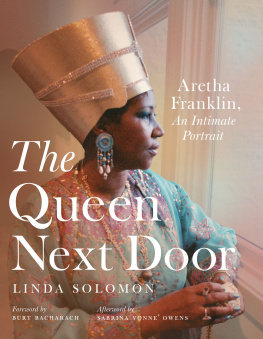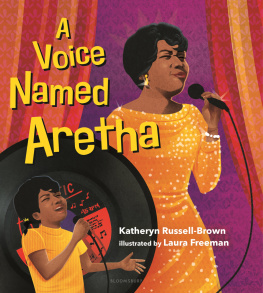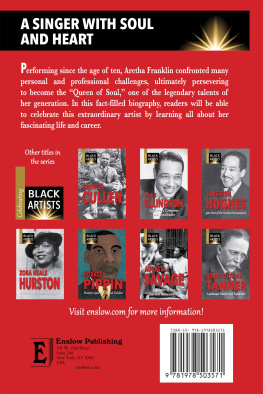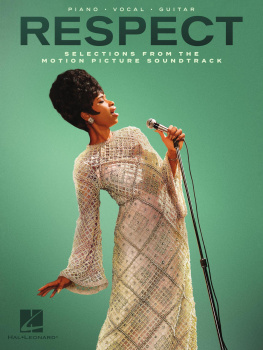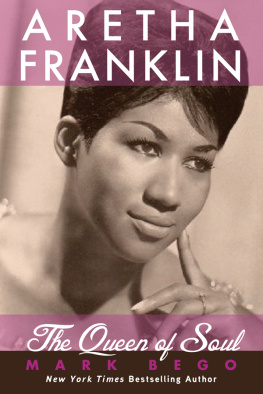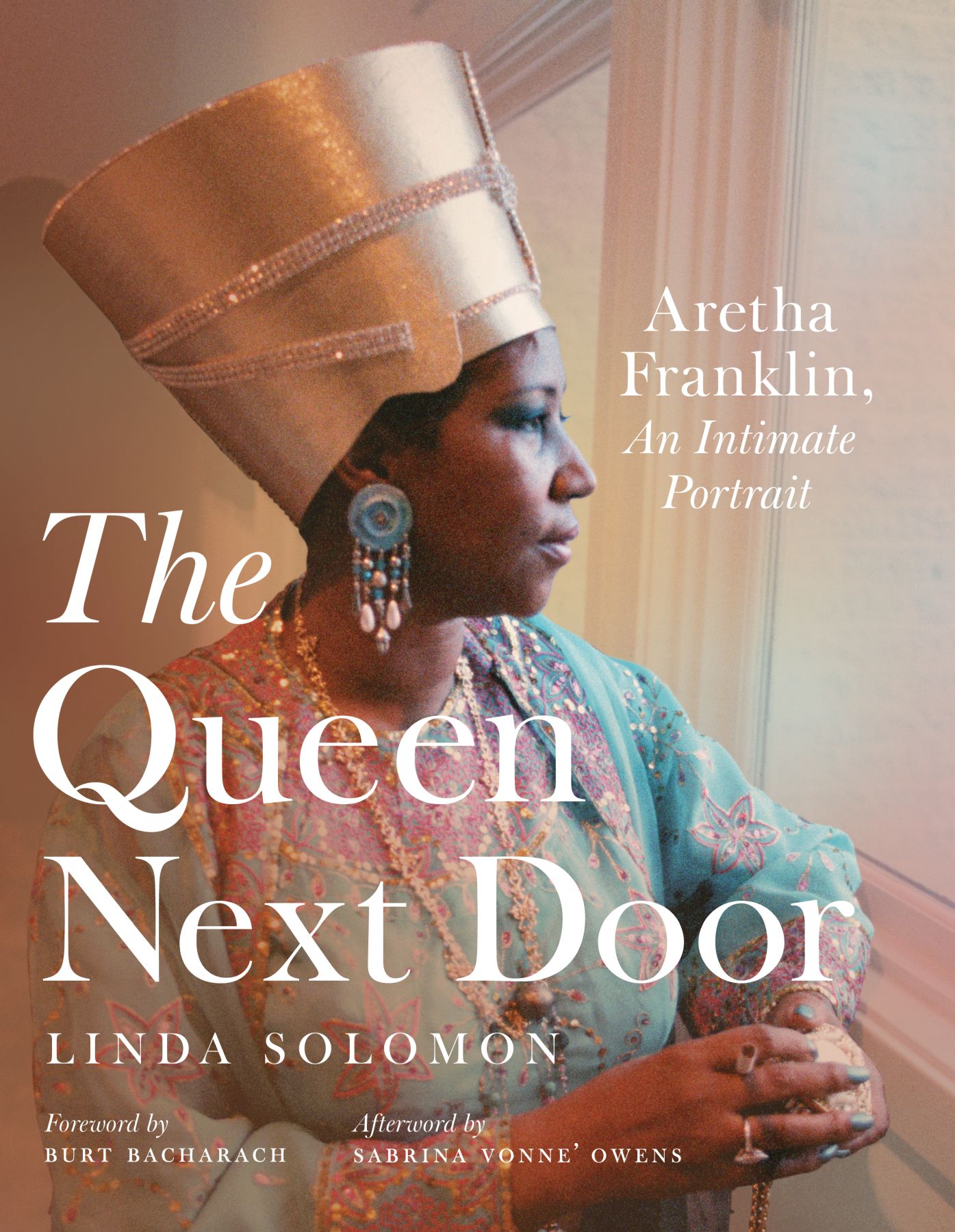
THE QUEEN NEXT DOOR
The Queen Next Door
Aretha Franklin, An Intimate Portrait
LINDA SOLOMON
Foreword by
BURT BACHARACH
Afterword by
SABRINA VONNE OWENS

Copyright 2019 by Linda Solomon. All rights reserved. No part of this book may be reproduced without formal permission. Manufactured in the United States of America.
Cover design and interior book design by Amanda Weiss
ISBN 978-0-8143-4728-7 (hardback);
ISBN 978-0-8143-4729-4 (ebook)
Library of Congress Control Number: 2019938101
W AYNE S TATE U NIVERSITY P RESS
Leonard N. Simons Building
4809 Woodward Avenue
Detroit, Michigan 482011309
Visit us online at wsupress.wayne.edu
For Barry... always and forever
To my mom and best friend, Mona Rappaport, whose extraordinary memory for every detail of my life helped me select the most special times with Aretha.
To my dad, Daniel J. Rappaport, a blessed memory, whose respect and love for music is my inspiration.
In loving memory of Erma Franklin, Carolyn Franklin, Reverend Cecil Franklin, and our Queen Aretha Franklin, who gave her heart and her soul to Detroit. My admiration, gratitude, and R E S P E C T forever and ever...
Contents
Aretha never ceased to amaze me. Vocally, just astonishing. No one like her... no one ever will be like her. Her musicality, the way she could work at the piano and be so creative at the piano, never was a sight reader only playing by ear, which was totally amazing to me. I went to record her once in Detroit but talked to her on the phone from LA beforehand about the song we were doing. I played the song and the key I thought would be the right key for Aretha and she said no. She went to the piano and said its too low, I can sing it two notes higher. She then sat at the piano and played the song in the key she wanted to sing it in. I was quite astonished... she was right on the money. She was just amazing. And to take a song like Say a Little Prayer, which I thought we had made a pretty good recording of with Dionne, and make Arethas version... it was so much better. I wanted her voice and her life to live forever. I miss her very much.
BURT BACHARACH
I am the lady next door when I am not on stage.
ARETHA FRANKLIN
My love for Aretha Franklin started when I was a kid and I first heard Respect on WKNR Radio. On a Saturday afternoon I hopped on the Hamilton bus to Northland Mall and to Kresges record department to buy her 45.
Growing up in Detroit in the sixties, we would see and often meet the Supremes or the Four Tops at the Michigan State Fair or the Roostertail on Detroits riverfront. On special Saturdays all my friends would line up outside one of the many record stores in downtown Detroit to ask for autographs from the Four Tops, the Temptations, Martha Reeves and the Vandellas, and Smokey Robinson and the Miracles as they signed their newest records for all the kids. The Motown stars lived near one another in Detroit, and kids like me would stop by their houses to take photos and ask for autographs. I still have my photographs of the Supremes and their autographs. The Queen of Soul was living in New York City and California and touring all around the world at the time.
In wasnt until 1982 that Aretha came back home.
I first met her in April 1983, when I had a weekly Sunday column in the Detroit News and just a year after she moved back home. Aretha had moved back to Detroit from Los Angeles to care for her father, the internationally noted civil rights activist Reverend C. L. Franklin, who remained comatose for five years after being shot during an attempted robbery at his home in 1979. This was an emotionally wrenching time in Arethas life. Aretha and the Franklin family prayed and hoped he would recover, but, tragically, he did not.
I had freelanced for four years photographing celebrities before I became a Detroit News columnist in the summer of 1982. I was hired by managing editor Lionel Linder, a wonderful man who had a smart philosophy: hire experts to write about the subjects they were experts inarchitects to write about design and judges to write about law. He felt if I had the chutzpah to capture the most private celebrities with my camera, then I should be the one to interview them too. So I started to write. My goal was to get the photographs and interviews no one else could, and number one on my list was one of the most private of them allthe Queen of Soul.
I was granted that opportunity in 1983 when I learned that Aretha would be a guest on a local TV talk show, Kelly & Company in Detroit. I called one of the producers of the show to arrange a story for my column in the Detroit News. Aretha allowed me to take her photo not only outside but also while she performed on the show.
My Sunday column featured just a single portrait of her at the piano. In it, I mentioned an upcoming concert benefit she was putting on to support her fathers medical trust fund. Shortly after, her assistant contacted me at the Detroit News and invited me to a reception Aretha would be attending with her family at the Manoogian Mansion, the official residence of the mayor of Detroit. It was a very small, intimate reception to announce the benefit she was planning for her father. The only guests were Franklin family members and a few close friends, including Motown Executive Vice President Esther Gordy Edwards. I felt so lucky to be included! This was the beginning of my friendship with Aretha.
Aretha invited me to meet her family and closest friends, and she met my family too. My dad was with me when I photographed her in rehearsal with James Brown, and my mom accompanied me when I photographed Aretha at the New York Friars Club Tribute to Clive Davis. My sister, Jill Rappaport, hosted a big bash for Aretha and her family one summer when Aretha was spending time in the Hamptons. She brought her grandkids with her, and she had a camera. I laughed when she asked me if she could take a photo of me. That was Aretha.
She graciously let me capture everything for my Detroit News column and later for my television interviews both locally and nationally. I not only respected her privacy, I respected her time. I would never shoot hundreds of photos as many do today with their digital cameras or cell phones. I was never in her face with my camera. I would always ask her first before taking her photograph even though I was invited to her home. I would say to her, May I have a few seconds to take a photo of you with your sister Erma in the hallway with your gold records?
Aretha was a strong advocate for women. She never said this to me personally because it was not her style, but I truly believe she gave me so many exclusive opportunities because she knew it would help my career. And it did. I met her when I was only twenty-nine. Everyone in the media knew she rarely granted interviews and, of course, my editors were impressed with my access. She was known for carefully protecting her privacy. She read her press and was sensitive (like most of us) to negative comments or reviews. She watched the local news, and a few noted Detroit broadcast journalists and print journalists became her friends. She treated journalists with respect, and I will forever be grateful for that. She never once asked for photo approval, and she always sent flowers with her handwritten words, Thank you from Aretha and the Franklin family.
Next page
